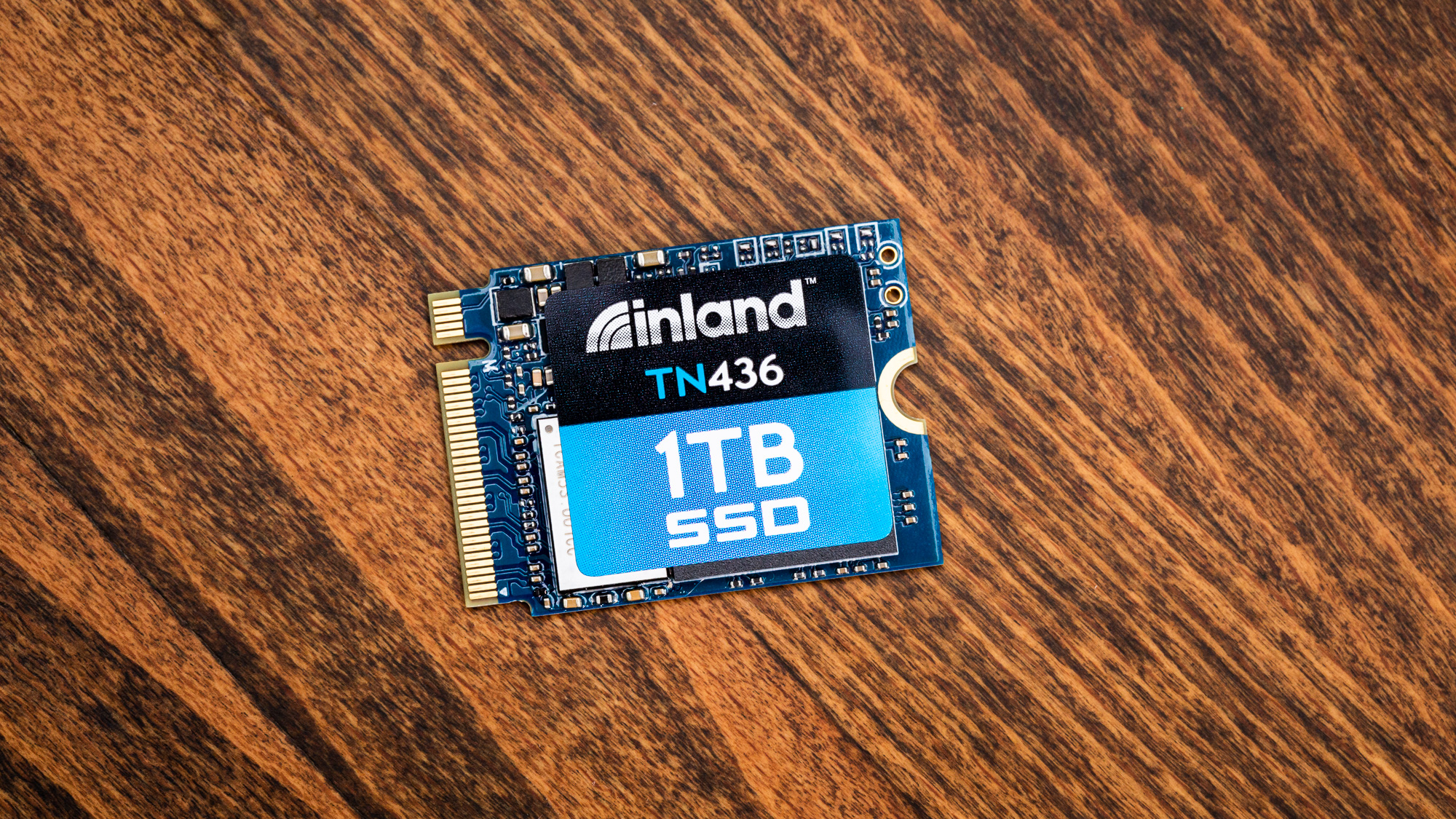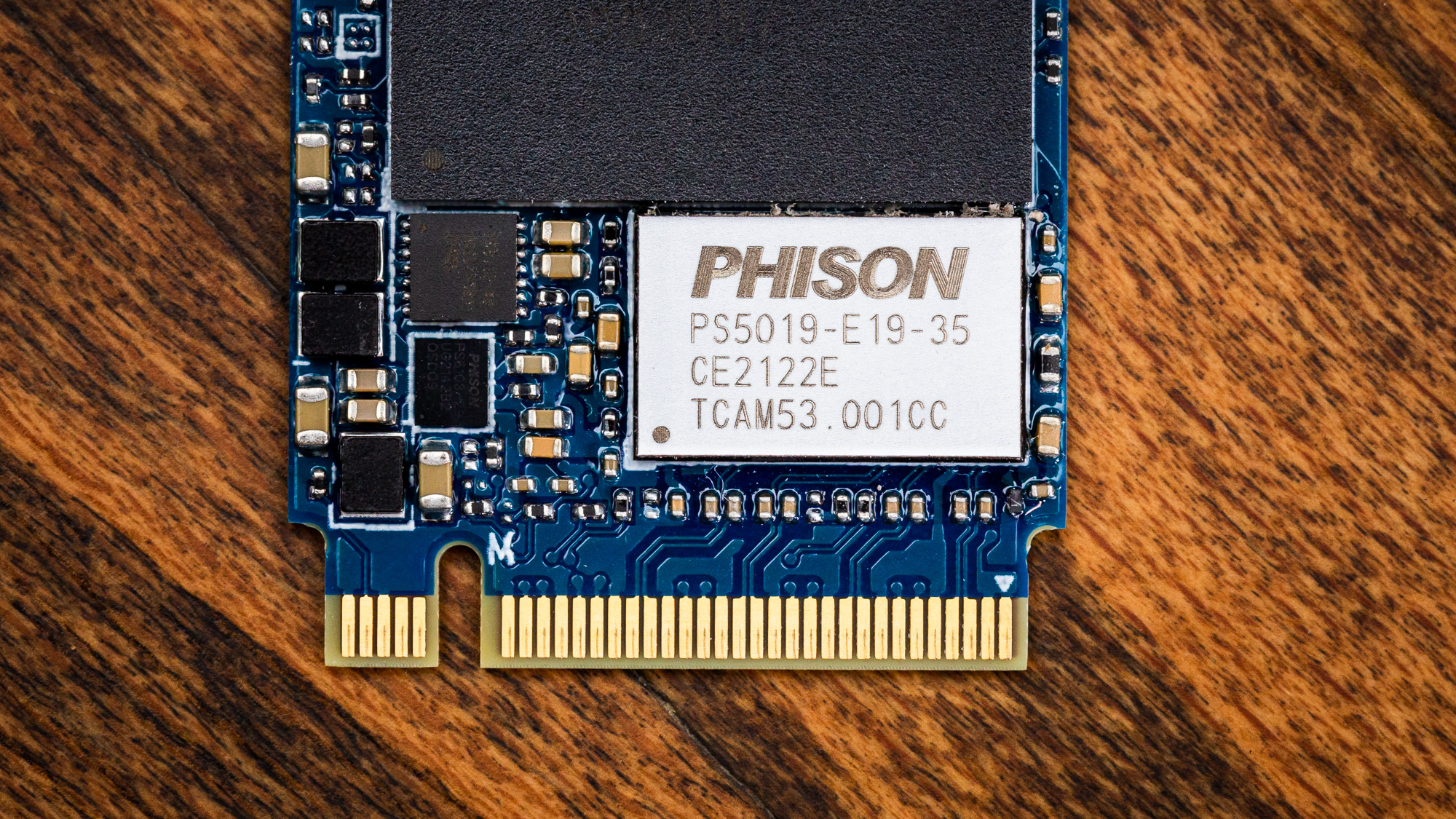Tom's Hardware Verdict
The 1TB Inland TN436 is a difficult drive to recommend unless you want the assurance of a retail 2230 SSD for your devices. Performance is quite weak and you pay for the advantage of a strong retail warranty.
Pros
- +
Retail 2230 form factor for special devices
- +
1TB of capacity in that form factor
- +
Good warranty
Cons
- -
Very weak all-around performance
- -
Very poor sustained performance
- -
Pricey
- -
Underwhelming in most respects
Why you can trust Tom's Hardware
The Inland TN436 is a specialized retail SSD designed to fit small devices such as Valve’s Steam Deck, Microsoft’s Surface, and certain ultrabooks. It will also work in computers and other devices that have the proper fittings for a 2230 drive. Drives of this size are usually single-sided and weaker in performance than most of the best SSDs, but may as a result produce less heat with lower power draw.
The small form factor makes it challenging to pack in a lot of capacity, but the TN436 delivers an ample 1TB - albeit at a relatively high price. Devices like the Steam Deck use OEM drives and replacement is usually not supported officially, but a retail drive like the TN436 has the advantage of a full-fledged warranty.
The TN436 appears to be a retail variant of the OEM Kioxia BG5 which uses relatively new hardware but nothing cutting-edge. There’s certainly worse drives out there. Buying OEM drives from secondary sites involves some risk, so having a retail option is nice. The success of the Steam Deck means that such drives should be more commonly offered. If so, newer controllers - like the Phison E21T and SMI SM2269XT - may be paired with newer flash on other retail 2230 drives in the future.
These drives will necessarily carry a bit of a premium. A higher level of performance than the TN436 would be nice but is not a requirement; often there’s more of a focus on power consumption and heat generation. This is because battery life and performance throttling are very real issues on higher end portable devices. For now, though, the TN436 at least offers you the opportunity to upgrade without the hassle of dealing with after-market OEM SSDs.
Specifications
| Product | 1TB |
| Pricing | $139.99 |
| Form Factor | M.2 2230 |
| Interface / Protocol | PCIe 4.0 x4 |
| Controller | Phison E19T |
| DRAM | N/A |
| Flash Memory | Kioxia 112-Layer BiCS5 TLC |
| Sequential Read | 3,400 MBps |
| Sequential Write | 2,400 MBps |
| Random Read | 320K |
| Random Write | 500K |
| Security | N/A |
| Endurance (TBW) | 600TBW |
| Part Number | 409375 |
| Warranty | 6-Year |
The Inland TN436 is only available at 1TB. Although technically a PCIe 4.0 drive, it is only rated for up to 3,400 / 2,400 MBps for sequential read and write, respectively. It is also rated for up to 320K / 500K IOPS, read and write. What makes it special is its form factor, 2230 or 22 x 30 mm, which allows it to fit in special devices like Valve’s Steam Deck and Microsoft’s Surface series.
Inland backs this drive with a decent 6-year, 600TBW warranty. The drive retails for $139.99 at Micro Center’s site - currently much more on Amazon - which is a bit on the expensive side, carrying a premium due to being one of few retail drives currently available in its form factor.
Software and Accessories
Inland’s SSDs are generally sold barebones without any software support.
Get Tom's Hardware's best news and in-depth reviews, straight to your inbox.
A Closer Look
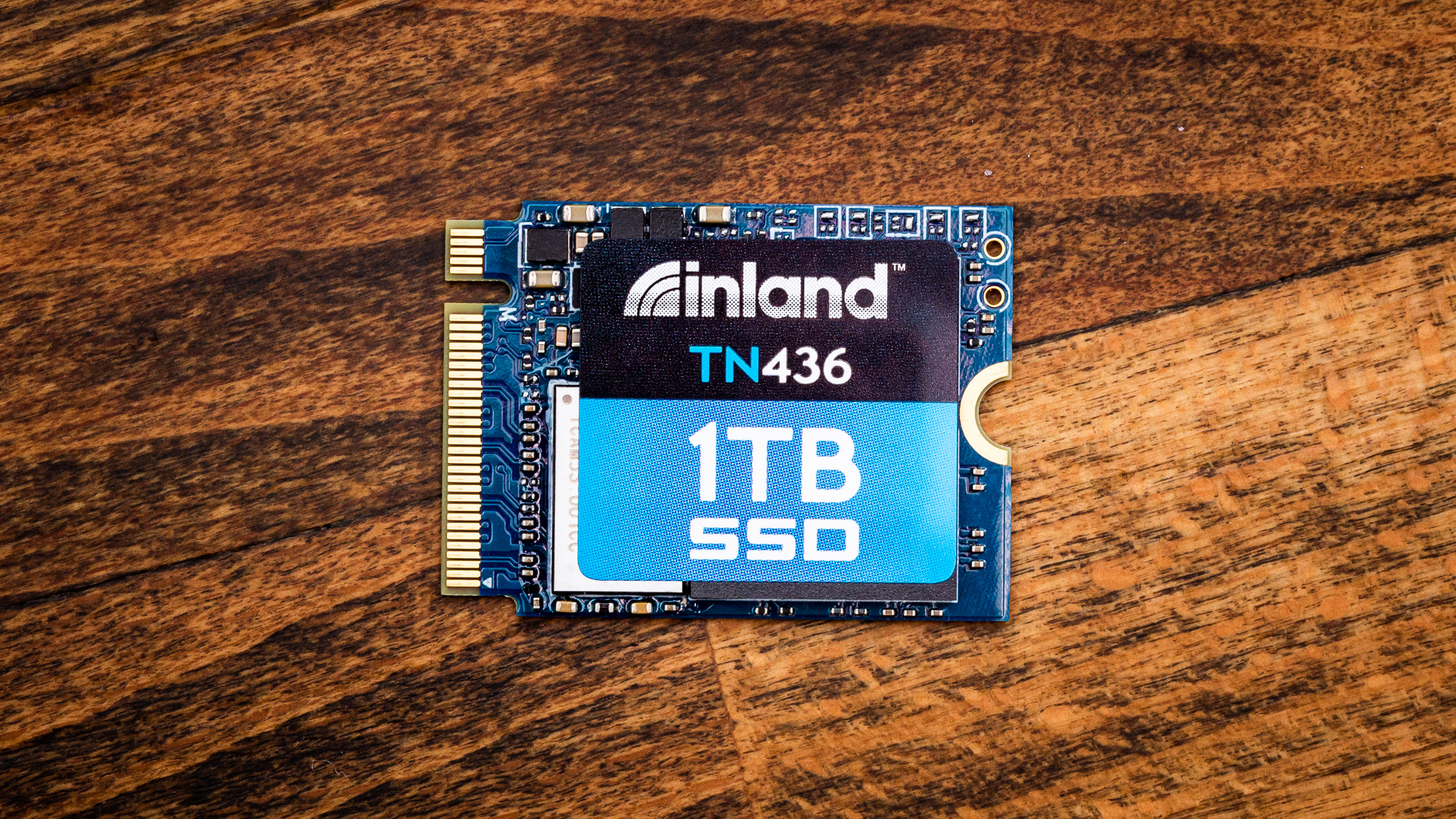
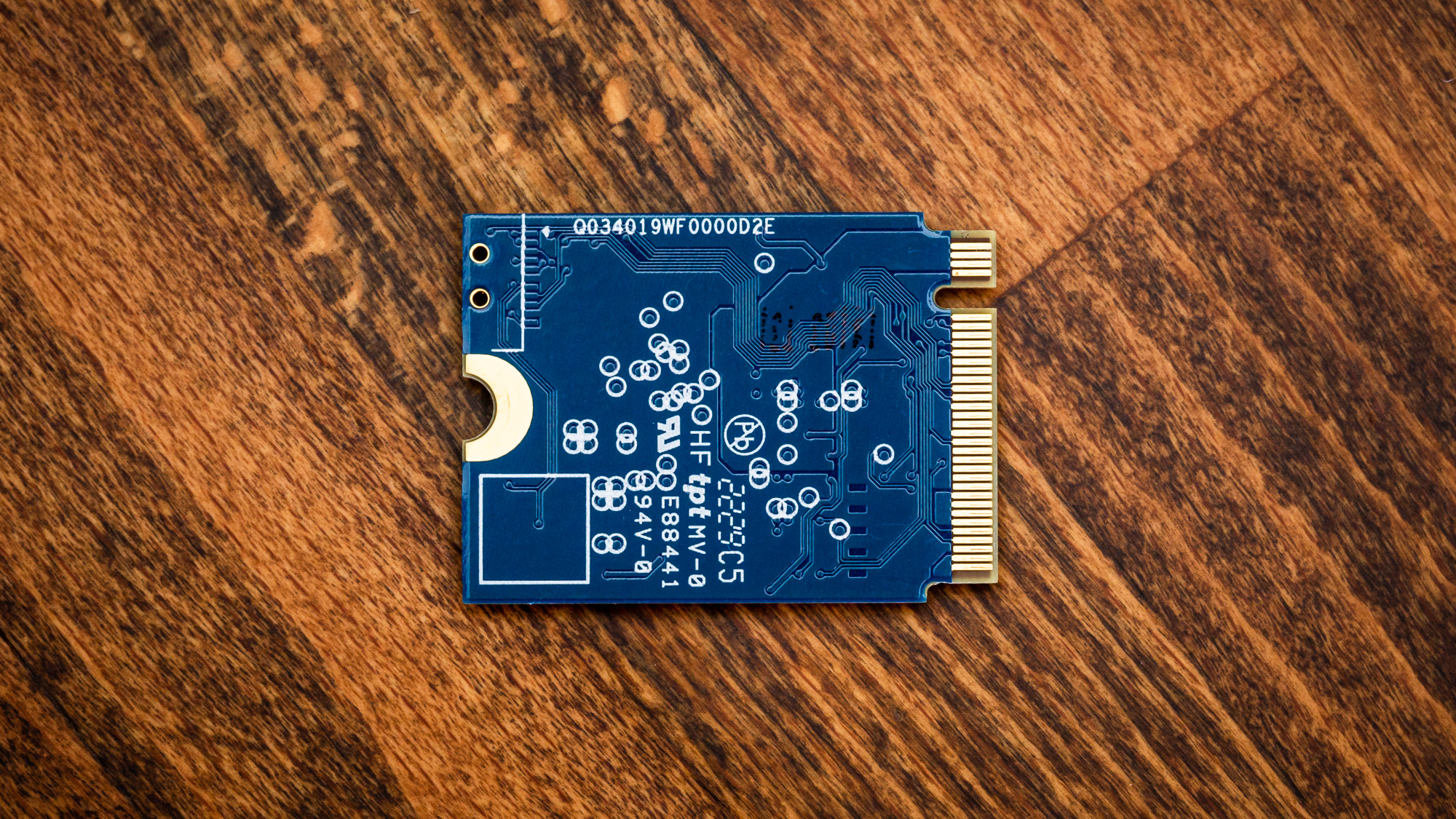
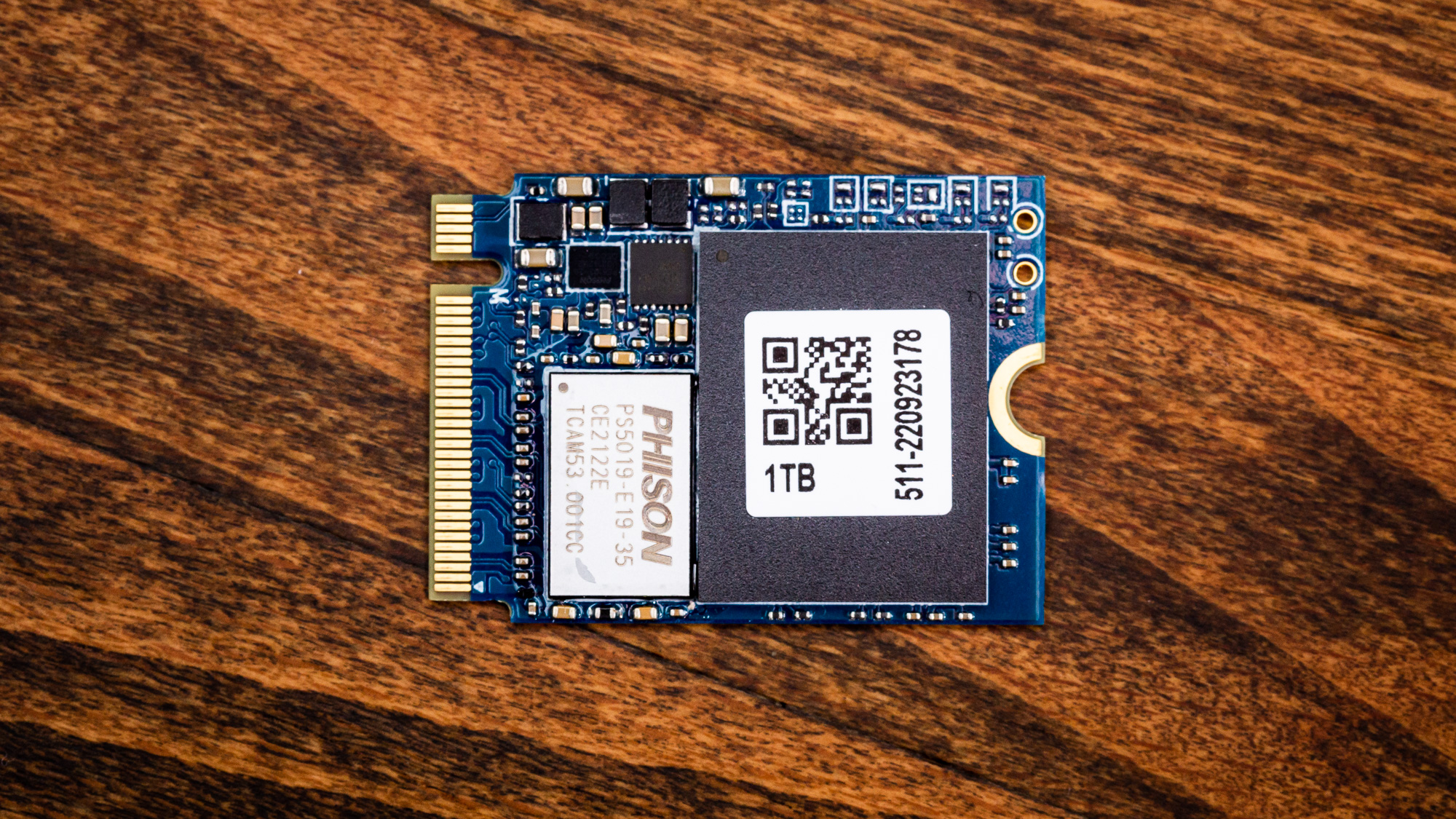
The Inland TN436 is a tiny drive in the M.2 2230 form factor. This makes it ideal for certain devices that can only take shorter SSDs. Its NAND package is separate from the controller, and there is no DRAM present. Some smaller drives will embed the controller and even DRAM in a single package, although that has some drawbacks. A separate controller is likely cheaper and easier to cool, plus the flash can be changed. This drive is single-sided which is particularly important for the right fit into devices like the Steam Deck.
Many motherboards will have standoff or offset holes for 2230 drives, so the TN436 may also be advantageous for HTPCs and other minimalist devices. NVMe enclosures will also generally take 2230 drives which might make your life easier when working with this SSD.
The TN436 is using the DRAM-less Phison E19T controller. This is a 28nm controller with a 1200 MT/s bus, which is ostensibly PCIe 4.0 but not appreciably faster than a PCIe 3.0 controller like the Phison E15T. It’s still an improvement over the older Phison E13T which is often used with 2230 form factor drives, including an OEM in the Steam Deck. However, it’s likely that the newer, faster, and more efficient 12nm Phison E21T will be available for this form factor in the near future.
The TN436 looks remarkably similar to the Kioxia BG5 and should therefore be employing 112-layer BiCS5 TLC. This flash has performed well on the WD Black SN770, the WD Black SN850X, and the 8TB Sabrent Rocket 4 Plus, but is generationally behind TLC made by other manufacturers such as that used on the SK hynix Platinum P41, the Samsung 990 Pro, and many other SSDs.
Some excellent budget drives have paired the Phison E21T with Micron’s newer 176-layer TLC, such as the Silicon Power UD90 and Team MP44L. This leaves open the door for such a combination in this form factor, which would be a superior option. Of course, BiCS5 has the option for denser dies and capacity is limited with just one NAND package on a single-sided 2230 SSD. While OEM options abound, the Inland TN436 is one of the few retail alternatives, at least for now.
MORE: Best SSDs
MORE: Best External SSDs and Hard Drives
MORE: How We Test HDDs And SSDs
MORE: All SSD Content

Shane Downing is a Freelance Reviewer for Tom’s Hardware US, covering consumer storage hardware.
-
petllama Are any of the comparison products even 2230? Why was the sn530 left out since it's one of the few 2230 1tb drives that comes highly recommended for the steam deck, which this product is advertising for.Reply -
patrick47018 This review really needs to be updated with testing showing performance vs. other 2230 drives.Reply -
watzupken Personally, I feel the performance of such small NVME SSDs are within my expectations. Given that this is a 2230, it will run into thermal throttling before it can hit anywhere near the PCI-E 4.0 transfer rate. My experience with a Samsung NVME 512GB drive in the 2242 form was that it ran so hot, it thermal throttled within a few seconds without any heatsink on it. And that was a PCI-E 3.0 drive. Even with a tall ram sink on it, the ram sink became so hot that I cannot even leave my finger on it for more than a second. So I expect 2230 to be worst since the heat concentration will be higher.Reply -
seanwebster Reply
As much as we would like to include more 2230 drives, there aren't many available in retail atm. Most are used, second-hand devices without any factory warranty. Unfortunately, the SN530 isn't a retail drive and it wasn't sampled to us for review, so we don't have a sample to compare to on hand. However, we recently sampled a Sabrent Rocket 2230 and will be able to compare it head-to-head in an upcoming review soon.petllama said:Are any of the comparison products even 2230? Why was the sn530 left out since it's one of the few 2230 1tb drives that comes highly recommended for the steam deck, which this product is advertising for.
Bear in mind, surfaces 50-55C+ are too hot to touch for us, but perfectly fine for these chips to operate at. Often, NAND controllers can reach temps of 70-85C before throttling.watzupken said:Personally, I feel the performance of such small NVME SSDs are within my expectations. Given that this is a 2230, it will run into thermal throttling before it can hit anywhere near the PCI-E 4.0 transfer rate. My experience with a Samsung NVME 512GB drive in the 2242 form was that it ran so hot, it thermal throttled within a few seconds without any heatsink on it. And that was a PCI-E 3.0 drive. Even with a tall ram sink on it, the ram sink became so hot that I cannot even leave my finger on it for more than a second. So I expect 2230 to be worst since the heat concentration will be higher. -
t-dome ReplyThe TN436 appears to be a retail variant of the OEM Kioxia BG5 which uses relatively new hardware but nothing cutting-edge.
If the hardware is similar, then the firmware surely is not. The BG5 has different specs, and also benchmarks on the Deck show completely different results.
My BG5 1 TB has slower sequential reads, but faster writes. And the random reads are 50% higher than those of the TN436.
